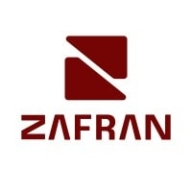


Microsoft Defender for Cloud and Microsoft Defender Vulnerability Management compete in the cybersecurity domain. Microsoft Defender for Cloud seems to have the upper hand due to its comprehensive integration with Azure services and enhanced visibility features.
Features: Microsoft Defender for Cloud includes daily security recommendations, visibility into Microsoft and third-party products, as well as AI and ML-based alerts, providing a robust view of an organization’s security posture. Its integration with Logic Apps allows for automated responses and it seamlessly integrates with Azure services. Microsoft Defender Vulnerability Management offers thorough vulnerability assessments, multi-cloud support, and compliance, with dynamic policy features allowing proactive threat identification and ease of integration.
Room for Improvement: Microsoft Defender for Cloud users report challenges with hierarchy configurations and high costs. There is a need for improved consistency across the interface and recommendations, along with clearer documentation and enhanced automation of alerts. Microsoft Defender Vulnerability Management users suggest the need for faster portal refresh rates, improved real-time threat monitoring capabilities, and a more sophisticated scoring system for risk assessment tailored to specific industries like healthcare.
Ease of Deployment and Customer Service: Both Defender for Cloud and Defender Vulnerability Management support deployments across public and hybrid clouds. The customer service experience varies with Defender for Cloud being appreciated for its customer service level though initial support responses can be slow. Defender Vulnerability Management is praised for its premium support but concerns about variability in support quality exist among initial service tiers.
Pricing and ROI: Microsoft Defender for Cloud is seen as costly, potentially a barrier for smaller enterprises, yet it offers notable return on investment through its extensive feature set and integration capabilities, valuable for larger organizations leveraging its full suite. Microsoft Defender Vulnerability Management is viewed as cost-effective when bundled with other Microsoft solutions, providing significant ROI by offering robust vulnerability management within existing licensing packages.
| Product | Market Share (%) |
|---|---|
| Microsoft Defender for Cloud | 5.3% |
| Microsoft Defender Vulnerability Management | 2.8% |
| Zafran Security | 1.1% |
| Other | 90.8% |



| Company Size | Count |
|---|---|
| Small Business | 26 |
| Midsize Enterprise | 7 |
| Large Enterprise | 45 |
| Company Size | Count |
|---|---|
| Small Business | 8 |
| Midsize Enterprise | 2 |
| Large Enterprise | 5 |
Zafran Security integrates with existing security tools to identify and mitigate vulnerabilities effectively, proving that most critical vulnerabilities are not exploitable, optimizing threat management.
Zafran Security introduces an innovative operating model for managing security threats and vulnerabilities. By leveraging the threat exposure management platform, it pinpoints and prioritizes exploitable vulnerabilities, reducing risk through immediate remediation. This platform enhances your hybrid cloud security by normalizing vulnerability signals and integrating specific IT context data, such as CVE runtime presence and internet asset reachability, into its analysis. No longer reliant on patch windows, Zafran Security allows you to manage risks actively.
What are the key features of Zafran Security?
What benefits can users expect from Zafran Security?
In industries where security is paramount, such as finance and healthcare, Zafran Security provides invaluable protection by ensuring that only exploitable vulnerabilities are addressed. It allows entities to maintain robust security measures while allocating resources efficiently, fitting seamlessly into existing security strategies.
Microsoft Defender for Cloud is a comprehensive security solution that provides advanced threat protection for cloud workloads. It offers real-time visibility into the security posture of cloud environments, enabling organizations to quickly identify and respond to potential threats. With its advanced machine learning capabilities, Microsoft Defender for Cloud can detect and block sophisticated attacks, including zero-day exploits and fileless malware.
The solution also provides automated remediation capabilities, allowing security teams to quickly and easily respond to security incidents. With Microsoft Defender for Cloud, organizations can ensure the security and compliance of their cloud workloads, while reducing the burden on their security teams.
Microsoft Defender Vulnerability Management enables organizations to identify vulnerabilities, manage patches, and fortify threat detection. It offers endpoint assessments, cloud incident management, and dynamic security through Microsoft's Security Scorecard integration.
Organizations leverage Microsoft Defender Vulnerability Management for advanced threat detection and response. It provides robust tools for vulnerability assessment and cloud incident management, integrated with Microsoft's Security Scorecard to enhance dynamic security profiling. Key features include automatic patch deployment, security configuration management, and seamless integration with Microsoft platforms, benefiting both on-prem and cloud environments. Organizations can track vulnerabilities with severity-based reports, helping manage outdated software and minimizing threat exposure.
What are the key features of Microsoft Defender Vulnerability Management?In healthcare, Microsoft Defender Vulnerability Management helps manage compliance with health regulations, while in finance, it aids in securing sensitive data from cyber threats. Manufacturing sectors benefit from its patch management, keeping operational technology systems less vulnerable to disruptions.
We monitor all Vulnerability Management reviews to prevent fraudulent reviews and keep review quality high. We do not post reviews by company employees or direct competitors. We validate each review for authenticity via cross-reference with LinkedIn, and personal follow-up with the reviewer when necessary.